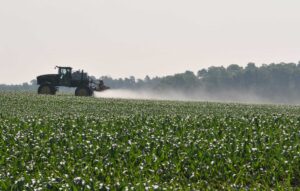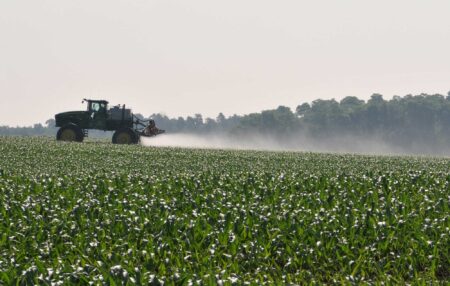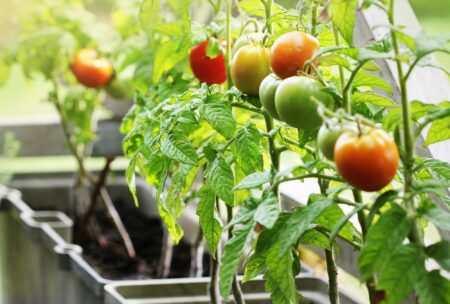What Happened
The May USDA World Agricultural Supply and Demand Estimates (WASDE) report indicated tighter projected carryout (supply left over at the end of the marketing year) for both old and new crop corn supplies. The 2024/2025 marketing year started Sept. 1, 2024, and runs through Aug. 30, 2025, reflecting last year’s crop production as well as expected usage. For the upcoming 2025/2026 marketing year, projected carryout is forecast at 1.8 billion bushels, well below the pre-report estimate of 2.044 billion.
Why This Is Important
Smaller supplies create a more critical environment for the upcoming growing season. Put another way, with a smaller carryout, there is little room for production error. The lower projected carryout numbers on recent USDA reports, including May’s, are akin to a warning shot across the bow that higher prices may lie ahead. The USDA estimated corn yield at 181 bushels per acre, which would be a record high yield. Crop years 2024/2025 and 2023/2024 both etched record yields as well. Is it possible to have record yields three years in a row? Only time will tell. If you are a buyer of feed, you should be on alert. If weather conditions for the upcoming growing season are normal, prices could drift lower. On the other hand, real or perceived adversity to production could rapidly raise prices. Feed buyers should be putting a strategy together to defend against the potential for higher prices now, when prices and volatility are low.
Producers should also consider marketing strategies — from a different perspective than buyers. If prices rally, make forward sales. However, emotion can take over. Because prices likely rallied for a reason, following through on sales can be difficult. To combat indecisiveness, or what some may term a lack of discipline, set sell targets above the market and let them execute should prices reach them. If it takes purchasing call options (retained ownership) as a strategy prior to the market rallying, then do so. If prices are near your designated target points, there is no reason to cancel orders or move them higher. You already have a fixed-risk re-ownership position in place.
What Can You Do?
Prepare for what might lie ahead. Weather conditions for the planting and growing season are by far the most dominant factors affecting yield potential. A good approach is to assume an average or above-average crop, and market accordingly. This means selling rallies and defending against lower prices with puts on bushels you don’t intend to forward sell. It also means having a strategy in place to keep a balanced approach, which is making responsible cash sales on a rally and having call option re-ownership in place. You are now ready for prices to skyrocket or fall apart. Spend time working through different scenarios and talking to the right people who can help you achieve your goals.
Find What Works for You
Work with a professional to find the strategy or strategies best suited for your operation. Communication is important. Ask critical questions and garner a full comprehension of consequences and potential rewards before executing. The idea is to make good decisions for the operation rather than emotionally charged responses to market moves, which are always dynamic.
Editor’s Note: If you have any questions on this Perspective, feel free to contact Bryan Doherty at Total Farm Marketing: (800) 334-9779.
Disclaimer: The data contained herein is believed to be drawn from reliable sources but cannot be guaranteed. Individuals acting on this information are responsible for their own actions. Commodity trading may not be suitable for all recipients of this report. Futures and options trading involve significant risk of loss and may not be suitable for everyone. Therefore, carefully consider whether such trading is suitable for you in light of your financial condition. Examples of seasonal price moves or extreme market conditions are not meant to imply that such moves or conditions are common occurrences or likely to occur. Futures prices have already factored in the seasonal aspects of supply and demand. No representation is being made that scenario planning, strategy, or discipline will guarantee success or profits. Any decisions you may make to buy, sell, or hold a futures or options position on such research are entirely your own and not in any way deemed to be endorsed by or attributed to Total Farm Marketing. Total Farm Marketing and TFM refer to Stewart-Peterson Group Inc., Stewart-Peterson Inc., and SP Risk Services LLC. Stewart-Peterson Group Inc. is registered with the Commodity Futures Trading Commission (CFTC) as an introducing broker and is a member of the National Futures Association. SP Risk Services, LLC is an insurance agency and an equal opportunity provider. Stewart-Peterson Inc. is a publishing company. A customer may have relationships with all three companies. SP Risk Services LLC and Stewart-Peterson Inc. are wholly owned by Stewart-Peterson Group Inc. unless otherwise noted, services referenced are services of Stewart-Peterson Group Inc. Presented for solicitation.
About the Author: With the wisdom of 30 years at Total Farm Marketing and a following across the Grain Belt, Bryan Doherty is deeply passionate about his clients, their success, and long-term, fruitful relationships. As a senior market advisor and vice president of brokerage solutions, Doherty lives and breathes farm marketing. He has an in-depth understanding of the tools and markets, listens, and communicates with intent and clarity to ensure clients are comfortable with the decisions.


:max_bytes(150000):strip_icc()/54422218704_4306ac9563_o-233521f62c594e098877df4c9a3cba63.jpg)




:max_bytes(150000):strip_icc()/20230627-tyler-zimmerman-074_corn-a95bcba138ca417a8815b22c6086ce91.jpg)



:max_bytes(150000):strip_icc()/Ship-docked-at-Port-Houston-1741d74fc460476881a4754e9ad43f42.jpg)
:max_bytes(150000):strip_icc()/54163679242_59f748f514_oSAFethanolplant-Iowa-d55130af73f44d9cb58b780fbdef60f2.jpg)